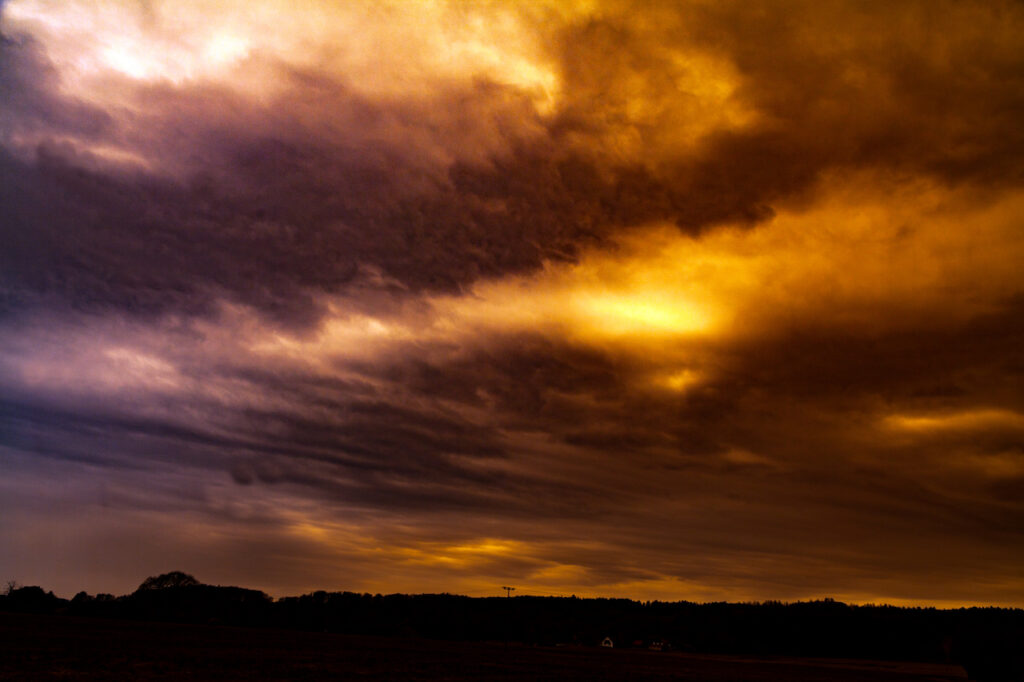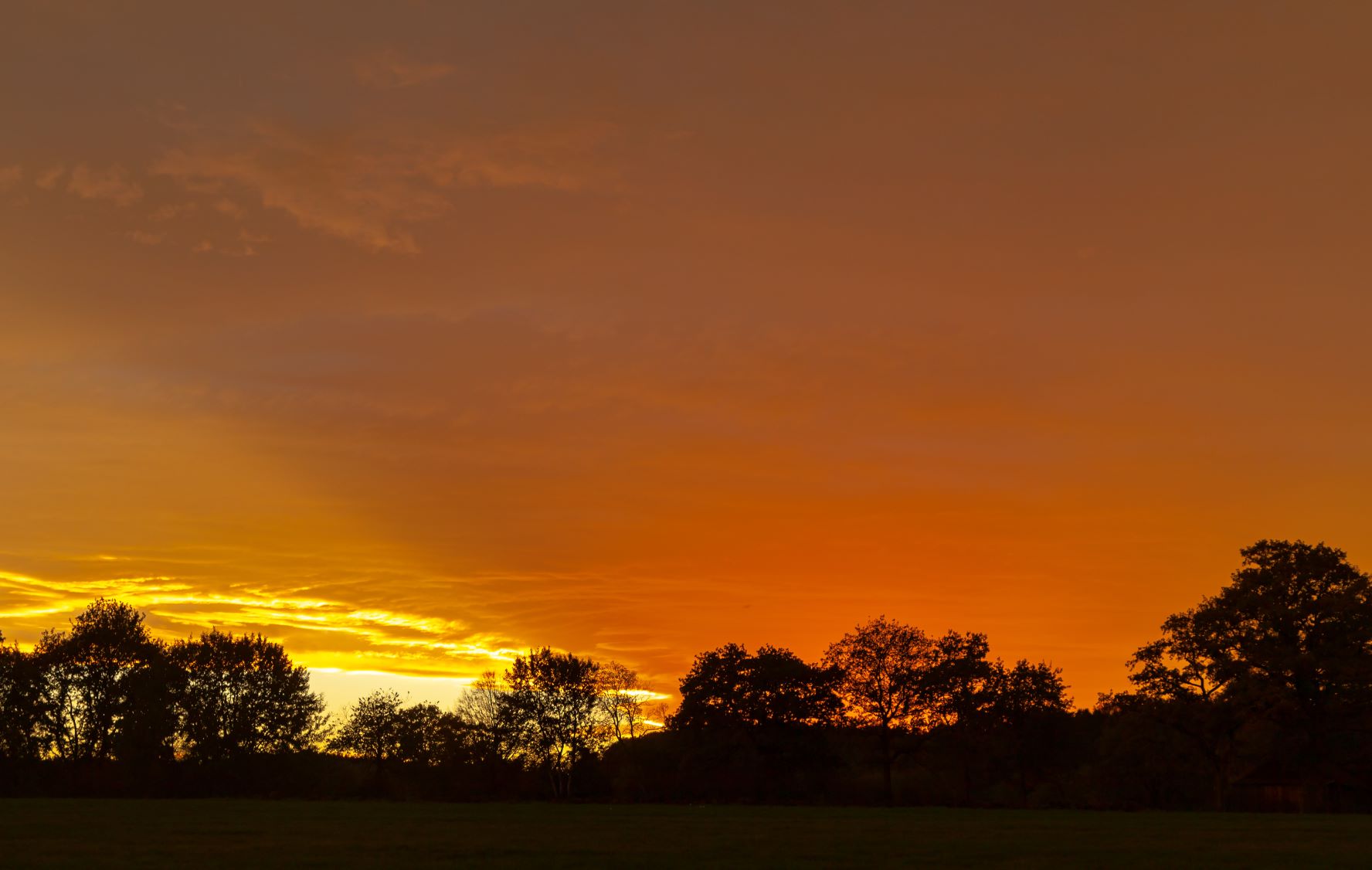Orografische Wolken und ein atemberaubender Aussichtspunkt oberhalb von Garmisch-Partenkirchen in Oberbayern
Peter Engelmann, Dezember 2024
Der weltbekannte Olympiaort Garmisch-Partenkirchen ist berühmt für Deutschlands höchsten Berg, die Zugspitze, für atemberaubende Schluchten und für die spektakuläre Landschaft, in die er eingebettet ist: das Werdenfelser Land.
Aber auch einzigartige Wetterphänomene prägen die Region. Ähnlich wie das Matterhorn ist die Zugspitze ein Ort, an dem bestimmte stationäre orografische Wolken wie Bannerwolken und Linsenwolken (Stratocumulus lenticularis oder Altocumulus lenticularis) zu sehen sind. Diese sogenannten orografischen Wolken sind für Fotografen von besonderem Interesse, da sie der Landschaftsfotografie eine einzigartige und magische Atmosphäre verleihen. Der Begriff „orografisch“ bedeutet, dass sie mit dem Relief der Landschaft in Verbindung stehen.
Stratocumulus Lenticularis
Stratocumulus lenticularis (linsenförmige Stratocumulus) sehen manchmal wie Ufos aus und wurden tatsächlich mit ihnen verwechselt, aber es sind orografische Wolken, die oft mit dem Föhnphänomen in Verbindung gebracht werden (wenngleich Föhnwinde für ihre Entstehung nicht notwendig sind).
Im Dezember 2024, an einem fantastischen Wintertag, konnte man in der Nähe der Zugspitze diese Wolke beobachten, die wie ein Pfannkuchenstapel aussieht.
Aber was sind diese mysteriösen Wolken und wie entstehen sie?

21. Dezember 2024: Eine Kappe auf der Zugspitze
Laut dem National Weather Service sind Altocumulus Lenticularis „mit Wellen in der Atmosphäre verbunden, die entstehen, wenn relativ stabile, sich schnell bewegende Luft nach oben und über eine topografische Barriere gepresst wird, die mehr oder weniger senkrecht zu der Richtung ausgerichtet ist, aus der der Wind der oberen Ebene weht. Durch diese Ablenkung entsteht eine Schwerkraftwelle in Windrichtung der topografischen Barriere, die einer Welle ähnelt, die man durch das Werfen eines Kieselsteins in einen Teich erzeugen kann. Wenn oberhalb der Bergkuppe genügend Feuchtigkeit vorhanden ist, bilden sich ACSL-Wolken innerhalb des Kammes dieser Bergwellen, wo die Luft aufsteigt. ACSL-Wolken entstehen und verflüchtigen sich ständig in der Nähe des Wellenkamms bzw. unmittelbar hinter dem Wellenkamm. Deshalb scheinen sie stationär zu bleiben (daher der Name), obwohl sich die Winde schnell (manchmal sehr schnell) durch die gesamte Wolke bewegen.
Das Phänomen tritt häufig im Winter auf, und hier sind einige Eindrücke von diesem Dezembermorgen.
Die orografische Wolke verschwand später und am Nachmittag beendete ein Wetterumschwung die magische Episode am Morgen des 21. Dezember 2024.

Wo kann man nun solch interessante Phänomene beobachten?
Die Zugspitze ist zwar nah, aber die gegenüberliegende Talseite ist für solche Beobachtungen besser geeignet: Hier befinden sich die Berge Wank und Kramer. Am Kramer entlang führt ein bekannter Wanderweg, der Kramer-Plateauweg.
An der Flanke des Wank befindet sich eine beeindruckende moderne Hütte mit einem ausgezeichneten Restaurant, der Tannenhütte. Von hier aus hat man einen atemberaubenden Blick auf das gesamte Zugspitzmassiv. Die pyramidenförmige Alpspitze ist gut zu sehen.
Von der Altstadt von Partenkirchen aus führen mehrere Wege zur Tannenhütte. Die Wanderung dauert etwa eine Stunde.
Bannerwolken
Es gibt aber auch noch andere orografische Wolken, die hier zu sehen sind. Sogenannte „Bannerwolken“ treten auch in der Nähe der Zugspitze oder des Matterhorns auf. Wie die Linsenwolke ist auch die Bannerwolke eine orografische Wolke.
Bannerwolken scheinen mit dem Berg verbunden zu sein und sehen aus wie eine Flagge oder ein Banner. Die Wolken erscheinen auf der Lee-Seite, d. h. der windabgewandten Seite des Berges. Ihre Dynamik ist Gegenstand laufender Forschungen. Diese Art von Wolken ist auch in Bergen wie dem Matterhorn oder der Zugspitze zu sehen.
Wie erreicht man den Aussichtspunkt?
Die Tannenhütte oberhalb von Garmisch-Partenkirchen lässt sich auf mehreren Wegen erreichen: Einer davon führt durch die romantische Schalmeischlucht, eine Schlucht, die zwar nicht mit der berühmten Partnachklamm vergleichbar ist, aber mit beeindruckenden Felswänden aufwartet. Alle Wanderwege beginnen in der Altstadt von Partenkirchen.

Partenkirchen: Traditionelle Häuser und das Flair eines typischen Alpenortes. Die Straße führt zum Ausgangspunkt des Weges.

Über einen der Wanderwege gelangt man in die wildromantische Schalmeischlucht. Ein echter Geheimtipp in Garmisch-Partenkirchen.
Ein anderer Weg ist einfacher und ein breiter Pfad, der auch der Transportweg zur Hütte ist. Im Winter ist dies sicherlich die ungefährlichere Wahl, da der steile Bergweg in der Schalmeischlucht leicht rutschig werden kann. Kurz vor der Tannenhütte befindet sich eine beeindruckende Hängebrücke. Wer Probleme mit solchen Brücken hat, kann sie umwandern und erreicht die Hütte ohne Probleme.

Der andere Weg ist einfacher und führt durch einen majestätischen Bergwald.
Garmisch-Partenkirchen ist von München und Innsbruck aus leicht mit dem Zug zu erreichen. Vor allem an Wochenenden sind die Straßen sehr voll, daher ist der Zug eine gute Option. Entweder man geht zu Fuß nach Partenkirchen oder man wartet auf den Bus (Nr. 4+5). Wanderwege führen weiter um das Wankbergmassiv. Es gibt auch eine Seilbahn auf den Gipfel des Wank.

Die moderne Tannenhütte ist ein faszinierendes Ziel auch für diejenigen, die sich für zeitgenössische alpine Architektur interessieren.

Ein großartiger Aussichtspunkt für Wanderer, Fotografen und Videofilmer

Von hier aus kann man das gesamte Zugspitzmassiv sehen. In der Mitte ist die Alpspitze
Fotografen schätzen den fantastischen Blick über ganz Garmisch-Partenkirchen. Der Blick reicht weit in den Westen.

© Deutsche Übersetzung: Susanne Niemuth-Engelmann / Redaktionsbüro Niemuth, https://redaktionsbuero-niemuth.de/ / 26.01.25










